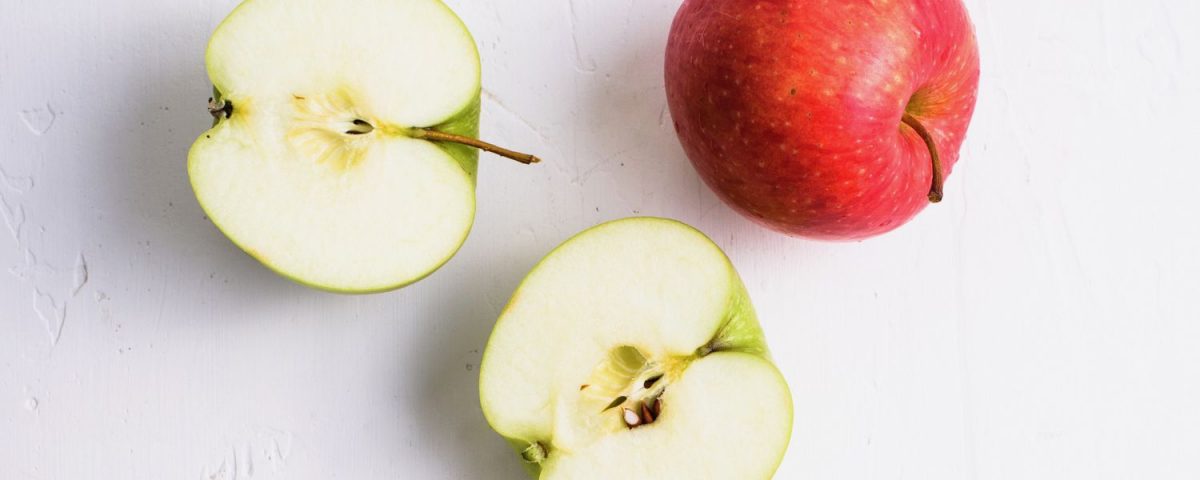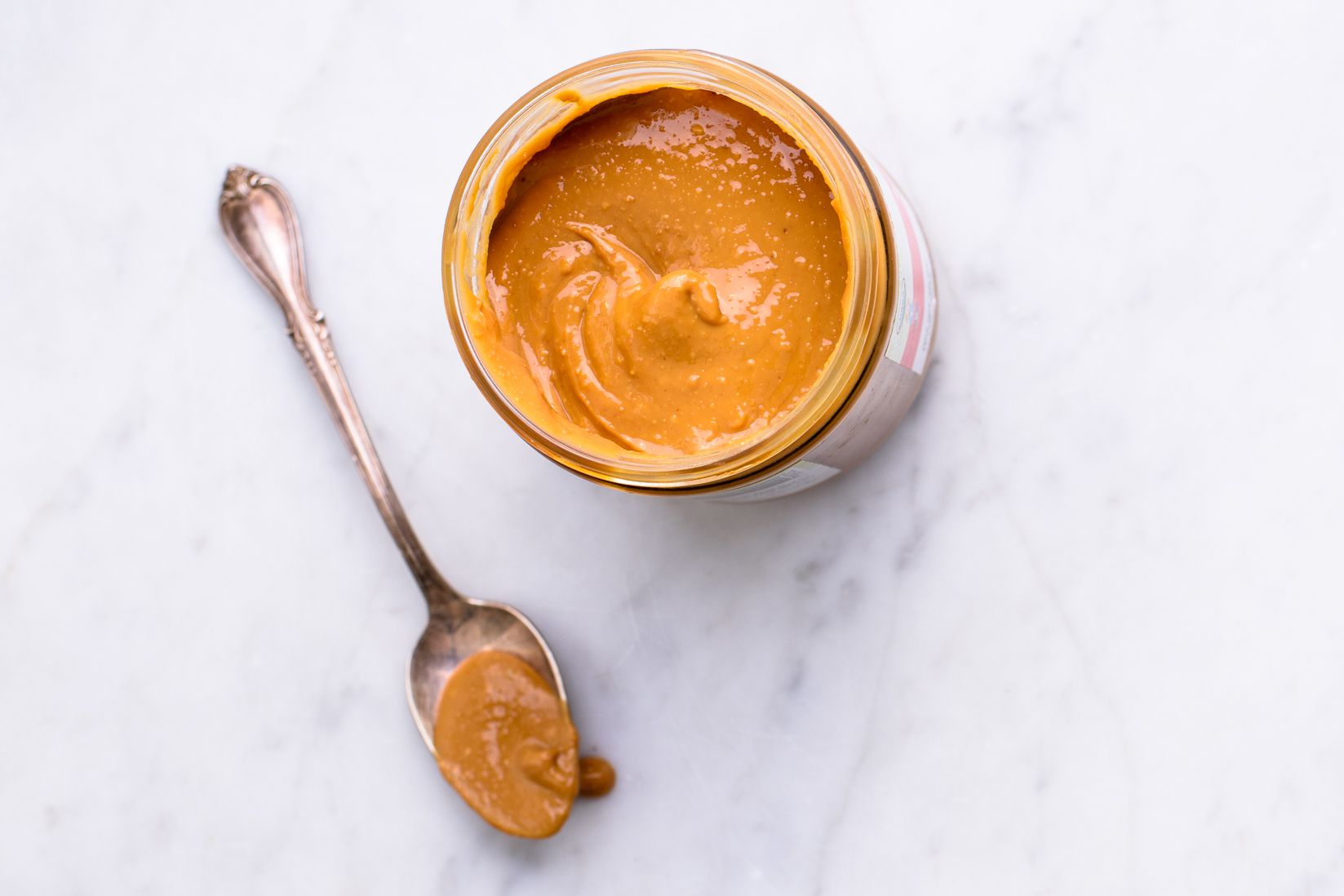
Why Nutrition Is the Most Important Part of Fitness
September 2, 2021
Women’s Body Bible: Training, Diet & Supplementation
October 3, 2021Ask five nutrition experts to provide a list of their favorite “superfoods,” and the results will vary—but they’ll also overlap. The reason is each food provides something different and of great use to your body.
One food on the list might be a rich source of protein or fiber but wind up lacking in certain vitamins and minerals. Another superfood could be loaded with disease-fighting antioxidants, but be largely absent of protein.
Eating a wide variety of “power foods” is the best way to ensure optimal health.
Try to eat the following foods every day, and you’ll check just about all of the nutritional boxes.
The apple and skin are higher in fiber than a lot of other fruits, which can help with weight loss by improving satiety. Apples taste fabulous, are filling, and provide energy in addition to the overwhelming antioxidant health benefits.
1. Blueberries Are a Top Antioxidant
In a study of common fruits and vegetables, blueberries contained more antioxidants than over 40 of their competitors. This places the unassuming berry at the top of the list for guarding against cancer, heart disease, dementia, and macular degeneration.
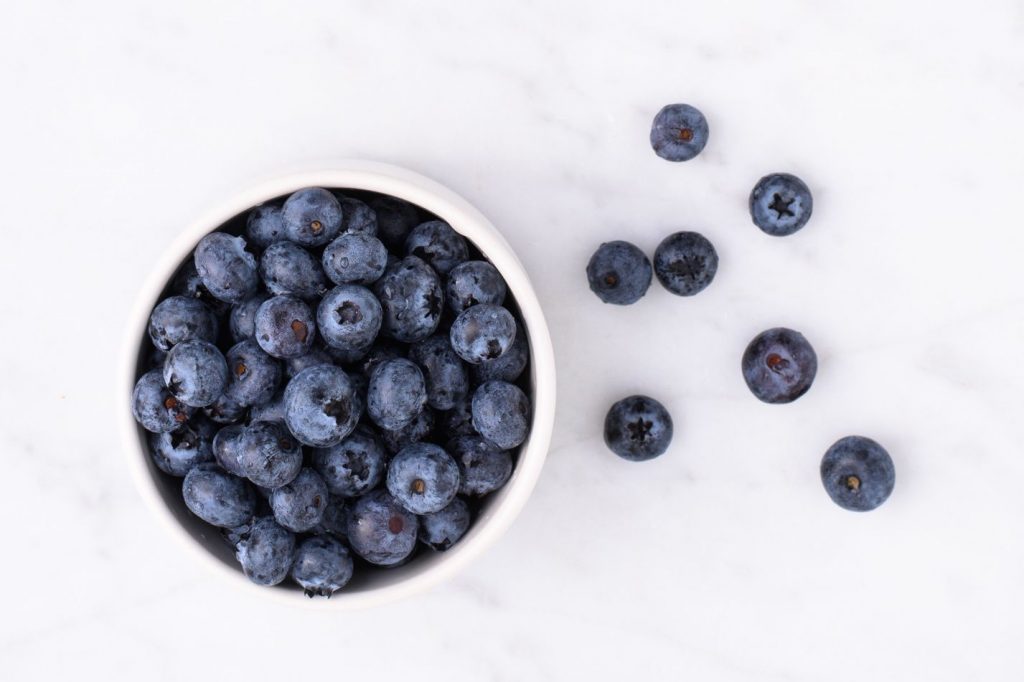
Blueberries also defend against urinary tract infections, thanks to the antioxidant epicatechins.
Epicatechins prevent bacteria from sticking to the bladder wall. Blueberries are also high in water, providing hydration to the skin and cells of the body.
Eating half a cup of blueberries satisfies one fruit serving per day.
The apple and skin are higher in fiber than a lot of other fruits, which can help with weight loss by improving satiety. Apples taste fabulous, are filling, and provide energy in addition to the overwhelming antioxidant health benefits.
2. Oats for Fiber Intake
Oats are high in soluble fiber and linked to lowering blood pressure and overall cholesterol levels. Oats are a good carbohydrate, and they’re rich in beta-glucan. Beta-glucan is a powerful soluble fiber that helps to slow the digestion of sugar and keep blood sugar levels under control.
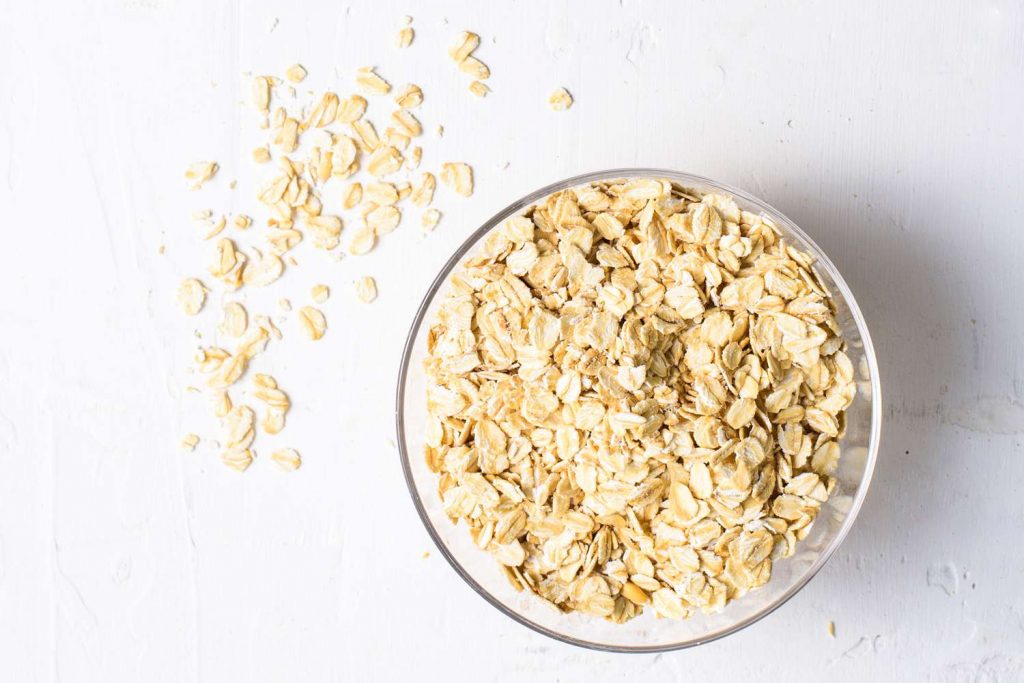
Oats are also a great source of plant protein helping with muscle growth and repair.
Each half-cup serving provides a whopping 10 grams, and many studies have shown eating oatmeal may reduce the risk of heart disease. Power up your day and your body with a bowl of oats—and breakfast aside, it’s an excellent pre- or post-workout meal.
The apple and skin are higher in fiber than a lot of other fruits, which can help with weight loss by improving satiety. Apples taste fabulous, are filling, and provide energy in addition to the overwhelming antioxidant health benefits.
3. An Apple a Day Keeps the Doctor Away
Research might actually confirm that “an apple a day keeps the doctor away.”
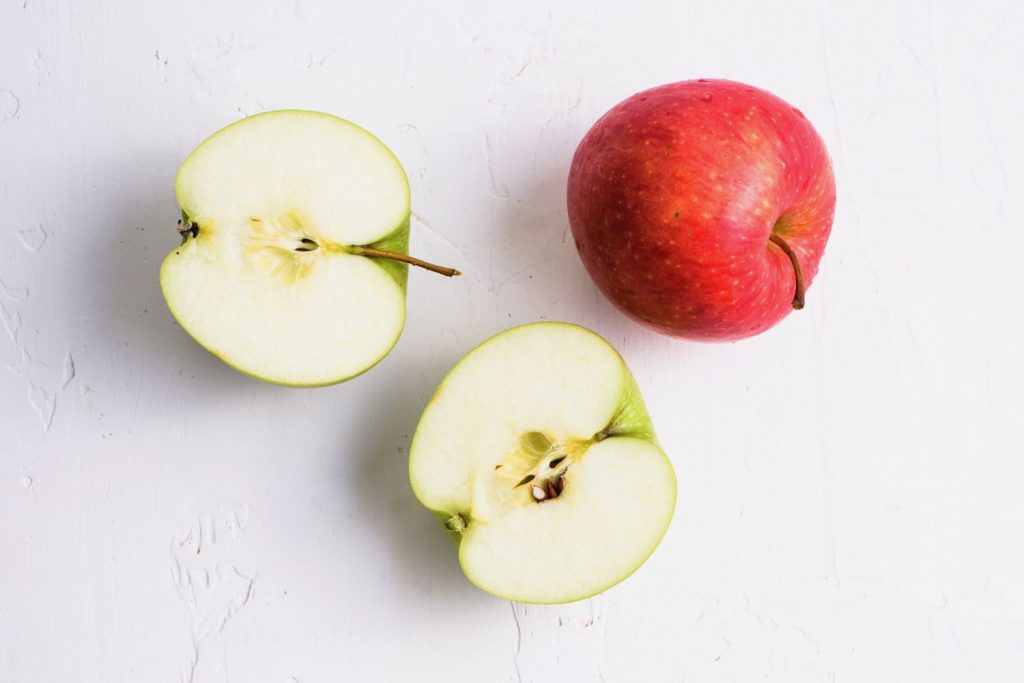
Apples are loaded with antioxidants quercetin and catechin, which protect our cells and help reduce the risk of cancer and heart disease.
Note: You can get more fiber and nutrients by eating the skin.
The apple and skin are higher in fiber than a lot of other fruits, which can help with weight loss by improving satiety. Apples taste fabulous, are filling, and provide energy in addition to the overwhelming antioxidant health benefits.
4. Green Tea Increases Metabolism
Green tea contains a powerhouse of antioxidants. Its antioxidant values are shown to be higher than those measured in fruits and vegetables.
:max_bytes(150000):strip_icc()/green-tea-crop-6cfd8a91bd3641e4ad228f0aa4fcf4db.jpg)
Green tea contains high doses of catechin, an antioxidant shown to help prevent cell damage in the body.
Catechin is indicated to reduce inflammation in the body, which is said to contribute to disease and illness. This powerful antioxidant is shown to reduce high blood pressure and decrease the risk of heart disease.
Green tea has also been proven to help block the formation of plaques linked to Alzheimer’s disease. Other health benefits include increased metabolism for weight loss. Enjoying high tea just became sweeter—just remember to keep it green. 5
5. Ground Flaxseeds Reduce Inflammation
Flaxseeds are not only a good source of fiber but also loaded with alpha-linolenic acid. Alpha-linolenic acid is an essential fatty acid shown to reduce inflammation in the body.
Flaxseeds also contain lignans, a type of plant compound known as polyphenols. These precursors contribute to reduced rates of certain hormone-related cancers.
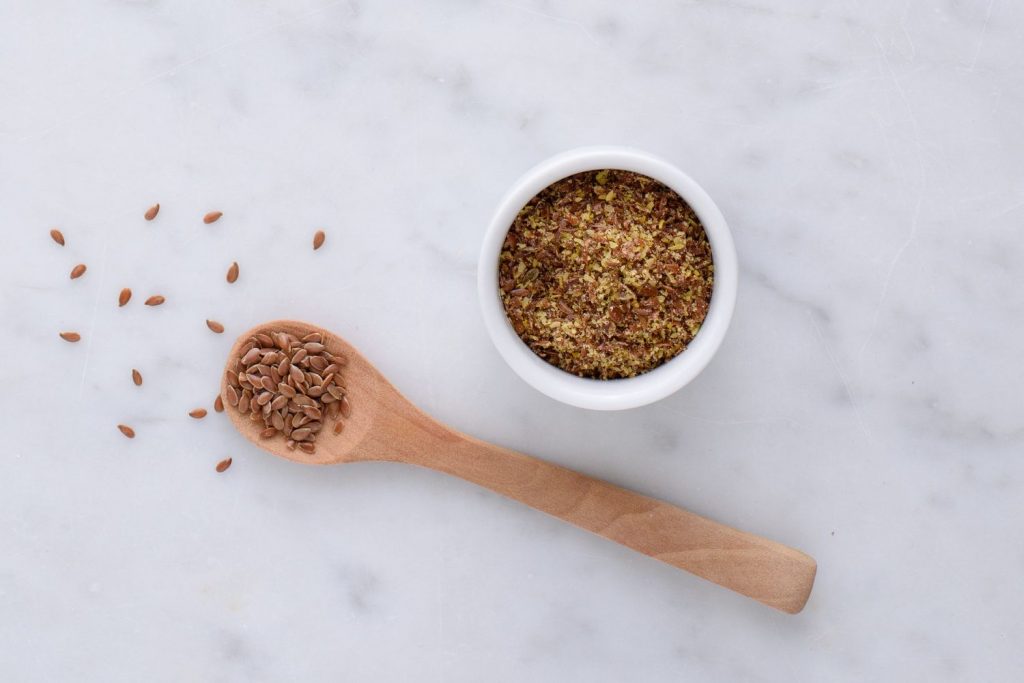
Studies suggest that other anti-inflammatory properties of flax seeds have been helpful for acne and asthma conditions. Ground flax is an excellent source of fiber and helps to alleviate digestive problems. Flaxseed is nutrient-dense and a rich source of good healthy fat. Flax is a remarkable “superfood” full of minerals, incredible fatty acids, and usable protein.
6. Yogurt Improves Gut Bacteria
:max_bytes(150000):strip_icc()/plain-yogurt-crop-c39077429cbf4fbbb7ad48c377b97dbc.jpg)
Yogurt is known for its probiotic or live beneficial bacteria. Yogurt is shown to reduce the growth of harmful bacteria in the digestive tract. It also helps maintain stable ph levels in the body and can support the immune system. Some research has suggested that probiotics can help with vaginal yeast infections, inflammatory bowel disease, ulcers, and urinary tract infections.
In clinical practice guidelines published by the American Gastroenterological Association in 2020, probiotics are recommended for people with ulcerative colitis or irritable bowel syndrome only in the context of a clinical trial.1
Yogurt is also a great source of bone-building calcium and protein. Not all yogurts are created equal. Look for the phrase “live and active cultures” on labels to ensure it contains probiotics. It is also recommended to consume plain over sugared varieties.
7. Broccoli Is the Antioxidant King
:max_bytes(150000):strip_icc()/Broccoli_cropped-5c6b15e746e0fb0001f0e505.jpg)
Broccoli, a cruciferous veggie, contains one of the most powerful antioxidants in our dietary toolbox. Broccoli protects our body against cancer and ranks at the top of the superfood list.
Broccoli offers high nutritional value with low caloric cost. It is the most nutrient-dense of these vegetable “superfoods.”
Research has labeled broccoli the king of cancer prevention. Research has shown sulfur compounds in broccoli signal our genes to boost production of detoxifying enzymes. These enzymes potentially attack cancer-causing compounds.
In addition, broccoli contains nutrients that help support immune and cardiovascular health, build bones, and fight birth defects.8
8. Olive Oil for Heart Health
:max_bytes(150000):strip_icc()/OliveOil-5c6b4a6146e0fb00019172f5.jpg)
Olive oil is considered a healthy dietary fat was shown to reduce the risk of heart disease. The primary fat found in olive oil is monounsaturated fatty acids (MUFAs). MUFAs have been shown to lower total cholesterol and help stabilize blood clotting.
Olive oil has been linked to lowered insulin levels, blood sugar control. Research has shown a great benefit to those suffering from type 2 diabetes.
Olive oil is also bursting with antioxidants called phenols linked to prevention of cholesterol buildup in the artery walls. Look for “virgin,” “extra-virgin,” or “cold-pressed” olive oils for best nutritional values.
The recommended dose is one tablespoon daily to reap heart-healthy benefits. 6 Brands of Gluten-Free Olive Oil9
9. Beans Are Brain Food
:max_bytes(150000):strip_icc()/BlackBeans_Cropped-5c6b63b1c9e77c00013b3c5b.jpg)
Beans are an excellent source of soluble fiber and good carbohydrate to eat daily. Soluble fiber helps the heart by soaking up cholesterol before having a chance to stick to the artery wall. The cholesterol is then eliminated through normal body functions. Studies show eating high soluble fiber may reduce total cholesterol by 10% to 15% and is linked to a reduced risk for heart disease.
Black beans contain anthocyanins, antioxidant compounds shown to improve brain function.
They contain the highest plant protein rating but must be combined with a grain such as brown rice to create a “complete” protein.Health Benefits of Beans and Legumes10
10. Cinnamon Is a Healing Spice
:max_bytes(150000):strip_icc()/Cinnamon_Cropped-5c6ee46cc9e77c00010d6b5e.jpg)
Studies have linked cinnamon to improved blood sugar in people suffering from diabetes. Plus, it’s high in manganese, iron, calcium, and fiber all beneficial to the body.
Cinnamon is also indicated to have antibacterial, anti-parasitic, and anti-fungal properties.
The health benefits of this super spice continue to be revealed through ongoing studies but it has long been used in traditional medicine.
By Darla Lea
https://www.verywellfit.com/eat-a-wide-variety-of-superfoods-3121399

